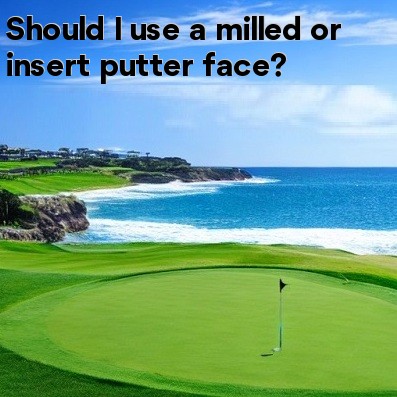
Should I Use a Milled or Insert Putter Face in Golf?
Golfers have a wide variety of putter options to choose from, including different head shapes, shaft lengths, and grip sizes. Another important consideration when selecting a putter is the type of face it has – milled or insert. Both types have their own advantages and disadvantages, and choosing between them depends on personal preference and play style.
Milled Putter Face
A milled putter face is produced by milling grooves directly into the metal of the putter head. This creates a flat surface with small, precise grooves that help grip the golf ball at impact. Milled putters often have a softer feel and provide more feedback to the golfer, allowing for better control and accuracy.
Advantages of a milled putter face:
- Consistency: The grooves on a milled putter face help promote a more consistent roll and distance control.
- Feedback: Golfers can feel the impact of the ball on the face, providing immediate feedback on the quality of the strike.
- Customization: Milled putters can be customized to specific weight preferences and head designs.
Disadvantages of a milled putter face:
- Maintenance: Milled putter faces require regular cleaning and upkeep to maintain their performance.
- Cost: Milled putters can be more expensive compared to putters with insert faces.
Insert Putter Face
An insert putter face has a softer material, such as polymer or aluminum, inserted into the face of the putter head. This insert helps create a better feel and sound upon impact, reducing vibrations and providing more forgiveness. Insert putters are often popular among golfers who prefer a softer, muted feel.
Advantages of an insert putter face:
- Feel: The insert material absorbs vibrations, resulting in a smoother, softer feel at impact.
- Forgiveness: The insert can help minimize mis-hits and provide more forgiveness on off-center strikes.
- Less Maintenance: Insert putters require less maintenance compared to milled putters, as the insert material is more resistant to wear and tear.
Disadvantages of an insert putter face:
- Consistency: Some golfers feel that insert putters do not offer the same level of consistency as milled putters when it comes to roll and distance control.
- Feedback: Due to the softer feel, feedback on the quality of strike may not be as pronounced as with a milled putter face.
Conclusion
Ultimately, the decision between a milled or insert putter face comes down to personal preference and play style. Golfers who prefer a softer feel and more forgiveness may opt for an insert putter, while those seeking better control and feedback may prefer a milled putter face. It is recommended to try both types of putters and see which one suits your game best.





